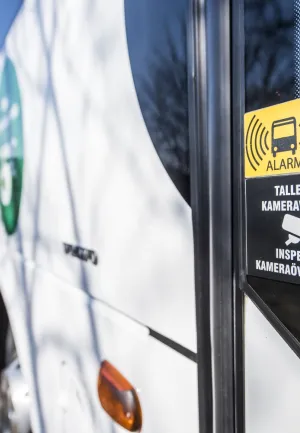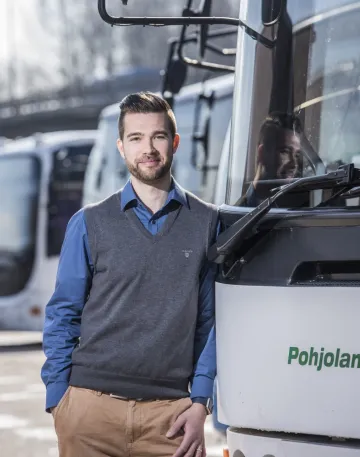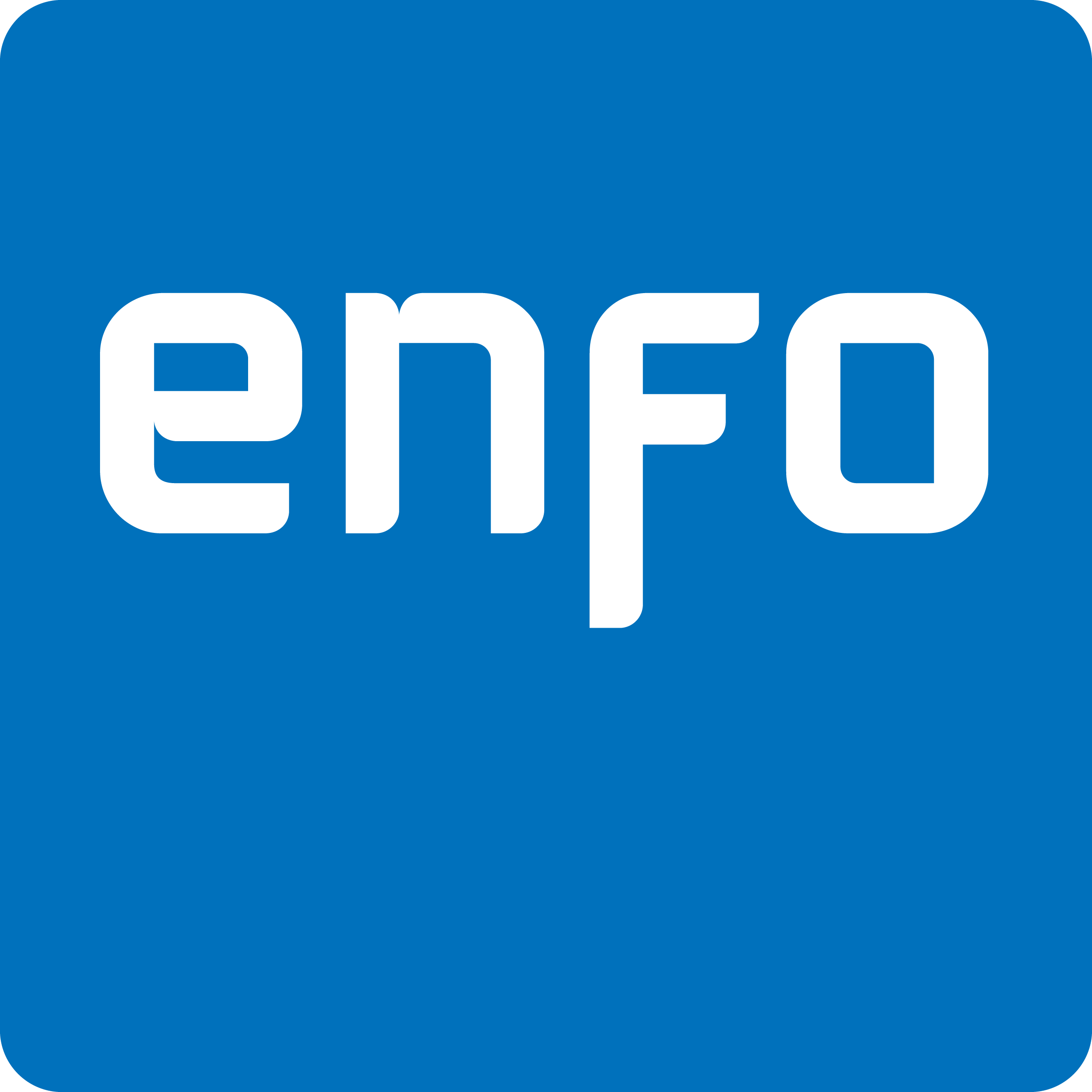Image

Pohjolan Liikenne – digitalisation as part of business
Content sections
Text
In Pohjolan Liikenne’s buses, a digital platform solution collects real-time data from thousands of recorders, sensors, and cameras. This data is used to improve safety both during driving and at the depot. Enfo implemented this unique solution based on the customer’s specific needs.
Hundreds of constantly operating buses are equipped with cameras and recorders, managed through an advanced centralised platform. Video recordings are automatically transferred to a server via WLAN when the bus arrives at the depot.
"The primary purpose of the system is to improve safety. Previously, checking accidents or reporting incidents was the driver’s responsibility. In difficult situations, it was sometimes a matter of ‘he said, she said.’ Now we can verify events from video recordings at any time and draw conclusions quickly regardless of the bus location. In the event of an accident, the driver can mark the time of the incident on the recording with the push of a button, making it easy to find," explains Antti-Jaakko Alanko, Technical Manager for Fleet and Technology at Pohjolan Liikenne.
Image

"Enfo’s team is skilled and innovative. They are eager to take on challenging projects and create customised solutions that meet our needs. Collaboration has been easy, and they quickly understood what we required."

Text
Preventing accidents and vandalism
The system also improves safety by helping prevent accidents. Cameras allow the driver to monitor door areas and the entire bus from multiple angles.
"Pohjolan Liikenne’s Enfo platform will expand this summer. Eventually, it will include 1,350 cameras and 270 recorders. In addition, GPS trackers, door switches, and motion/coverage sensors – over 2,500 in total – will be integrated. The solution is fully scalable, and additional components can be added as new functionalities are developed together with the customer,” says Enfo expert Aarne Mäkelä.
Comprehensive monitoring significantly eases the driver’s work.
"Traditionally, the driver relied on mirrors, for example when passengers exited the bus. With camera monitoring, the driver can now observe the situation on a screen,” Alanko explains.
Optimised heating ensures readiness
An interesting feature is the integration of recorders with engine block heaters in a new way.
"The engine heating system queries the same platform overnight to determine when the bus will depart and starts heating accordingly. The system checks weather conditions via the meteorological interface to ensure the bus is adequately heated and ready for departure. This achieves significant long-term savings," Alanko notes.
Pohjolan Liikenne is very satisfied with Enfo’s work.
"We received the solution we were looking for. Collaboration continues closely, as our goal is to equip all buses with similar systems," Alanko concludes.
Alanko’s tips for successful projects
1. Allocate sufficient and flexible resources for large development projects. When planning resources, consider that development continues even after the main project is completed. Not everything can be anticipated at the start of a scheduled project, and new development directions will constantly emerge. Resources must be prepared to handle this.
2. Maintain open communication within a diverse project team. The project team should be sufficiently comprehensive: involve as many people as possible, from end users to implementers, and ensure enough face-to-face meetings. Different perspectives improve collaboration and final solutions.
3. Understand the final operational environment. The team must be familiar with the conditions where the solutions will operate. This cannot be fully understood from a designer’s desk – it requires on-site observation. In mobile fleets, considerations include tight spaces, temperature variations, and vehicle movement.
Benefits of the solution
Scalability
- The centralised platform makes it easy and quick to integrate additional services into the overall system.
- Implemented solutions scale and allow for new, innovative uses: in Pohjolan Liikenne’s case, the system was originally designed for cameras, but sensor data found a new application for controlling vehicle heating.
- Savings: By integrating recorders with the engine block heating system, buses are heated at the correct time according to departure schedules and weather conditions. During winter, this minimises revenue loss from missed departures, ensuring buses start reliably regardless of weather.
Speed and ease of operations:
- Wireless transfer of recordings accelerates responses and analysis, regardless of bus location. Recordings marked by drivers or requested from the time of an incident are easy to retrieve from the server.
- Tools have been created to help drivers comprehensively monitor doors and passenger routes inside the bus.
- Malfunction alerts for cameras or recorders are easily received.
Improved safety:
- Accident rates can be monitored better than before. Passenger safety improves, and door cameras help reduce accidents through monitoring and automation.
- Fleet monitoring is enhanced, and reduced vandalism brings additional savings thanks to camera surveillance.
Since 1949, Pohjolan Liikenne has safely transported customers from place to place on time. The fleet is well-maintained and continuously renewed. The modern ServLine maintenance system optimises servicing and repairs.
